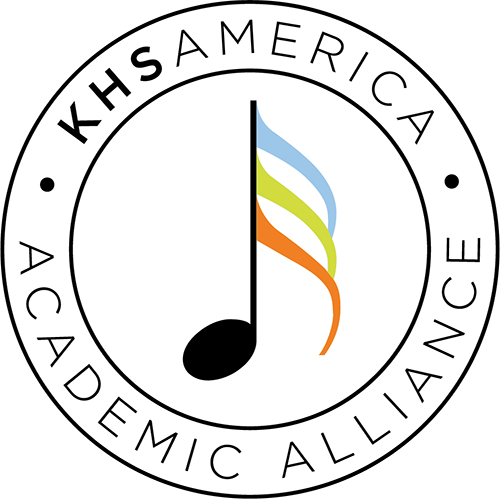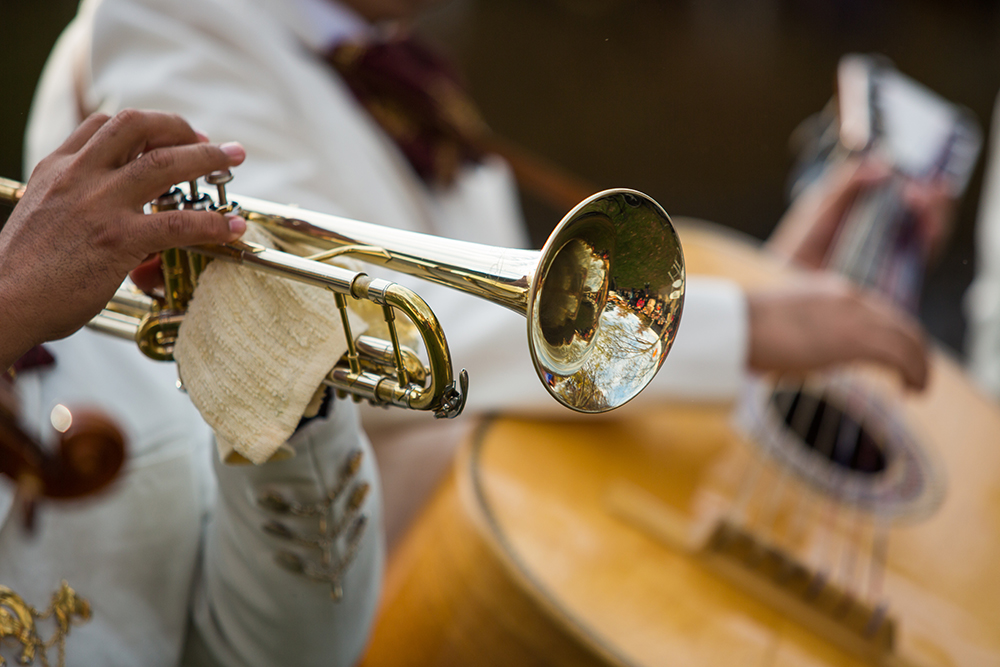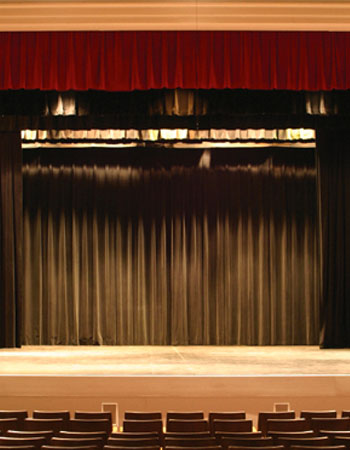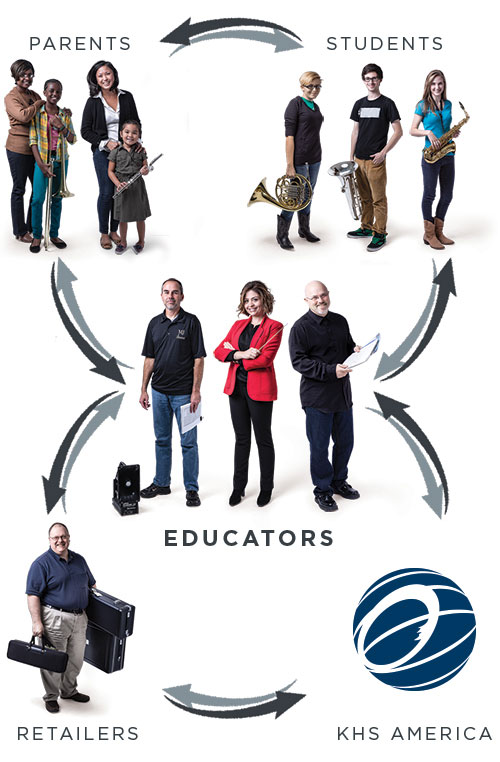So you started a Mariachi at your school. The kids are excited, your administration is on board, the instruments are here, and life is excellent. But before passing out the instruments or playing the first note, it’s crucial to have both a plan for how you will structure your rehearsals as well as a long-term goal for how each rehearsal will contribute to your overall program. A Mariachi rehearsal can run just like a Band or Orchestra rehearsal with a few added components. Students who begin their musical journey in Mariachi can have just as robust a musical education as students who join the Band, Orchestra, or Choir. Below is a suggestion for structuring a Mariachi rehearsal, along with some thoughts and ideas that have worked for my ensembles.
Set Up Time and Listening
Much like in Band or Orchestra, you will need to allow for set-up and tear-down time in your rehearsals. The number of minutes allotted for this portion of class is up to the director. Generally, setting up Mariachi takes less time than setting up Band and is more similar to Orchestra, as instruments do not have to be assembled.
Additionally, the set-up time is a great time to have Mariachi music playing as students walk in the door. Students need to hear and see many examples to grasp the stylistic nuances that go into Mariachi music.
Tuning
Much like the Orchestra, the string instruments should be tuned before the start of rehearsal. Students must learn what ‘in-tune’ sounds like from the beginning. Playing basic activities like warm-ups and rhythm exercises on tuned instruments can make a significant difference for your students as their ears develop and they learn to listen. Tune your trumpet players after they have warmed up sufficiently.
Warm-Ups
Much like in Band and Orchestra, warm-ups are an essential component of the rehearsal. Here you are at liberty to choose a method book, a collection of exercises, use different song styles, or parts of the music that can be simplified to become a warm-up. A simple internet search will yield a variety of resources that are available to young Mariachis. Group warm-ups help students set their ensemble sound and learn to hear parts other than their own.
Again, listening is a skill that needs to be understood, and warm-ups are a great way to start developing it. Concepts such as balance, blend, duration, articulation, strumming patterns (velocity, weight, hand motion), bowings, intonation, and chord progressions can all be addressed during ensemble warm-ups.
Rhythm Exercises
There are many approaches to working on rhythm in Mariachi. Use online rhythm generators, method books that focus specifically on rhythms, a rhythm of the day, or allow students to create rhythms for the class. Unison rhythms are yet another avenue through which to teach listening, allowing your students to work on concepts much like those listed above. Go slow, use a metronome, and hold the students accountable for tempo and rhythmic clarity. The work will pay off as your students become literate musicians.
Vocal Warm-Ups
This is a component of the Mariachi rehearsal that most often does not present itself in Band or Orchestra rehearsals. However, singing does not have to be scary. Students should start singing on day one, which will make it natural for them. As you establish the idea that singing is a whole ensemble activity, treat singing just as you would any other portion of your rehearsal – do it daily. Strive for good singing technique, clear diction, intonation, blend, tone, dynamics, etc. Talk to your Choir teacher, bring vocal coaches in to work with your students, and look for resources online. Many excellent choral warm-up books can be used both as choral warm-ups and as unison reading exercises.
The Repertoire
And now the moment your students have been waiting for…the repertoire. Programming repertoire for Mariachi performances functions much like selecting repertoire for any other ensemble. Choosing pieces at the appropriate level is key to your ensemble’s success. Examples of songs that work well for young Mariachis include:
- Cariño
- Cerca del Mar
- El Rey
- Cielito Lindo
- Árboles de la Barranca
- La Feria de las Flores
- Las Mañanitas
- Marieta
- Volver, Volver
- Los Laureles
- Tu, Solo Tu
- De Colores
Additionally, there are many excellent arrangements of well-known Mariachi songs that can be found online. There are many Mariachi styles from which to choose, including boleros, rancheras, sones, cumbias, etc. Choose pieces from a variety of styles for interest and contrast. Unlike Band and Orchestra, where we learn pieces for a concert cycle, perform them, and move on to different pieces, every piece that your Mariachi learns will become part of their standard repertoire. As you learn new songs, add them to your group’s repertoire and keep them on constant rotation in your rehearsals. This will aid in memorization, an essential component of Mariachi performance, which is not expected in Band or Orchestra (not including pep band and marching band, of course).
Listening
Mariachi is an aural tradition. For many generations, songs were taught by rote and were learned without the use of sheet music. Although we have sheet music for our students, they must listen to great Mariachis to truly understand the styles, nuances, and showmanship required in an excellent Mariachi performance. Make listening part of your daily routine. Listen to different versions of the same song and discuss the differences between them. Examples of amazing Mariachis and singers to have your students listen to include:
- Pedro Infante
- Jose Alfredo Jimenez
- Vicente Fernandez
- Pepe Aguilar
- Miguel Aceves Mejia
- Jonathan Palomar
- Arturo Vargas
- Alejandro Fernandez
- Mariachi Vargas
- Mariachi Sol de Mexico
- Mariachi Nuevo Tecalitlan
- Aida Cuevas
- Linda Ronstadt
- Rocio Durcal
- Natalia Jimenez
- Angela Aguilar
- Lupita Infante
- Lucha Villa
- Rosy Arango
- Lila Downs
- Mariachi Reyna
This is by no means an exhaustive list. Let your students suggest songs and artists to listen to as well, making the process fun and inclusive.
Final Thoughts
I leave you with a few additional thoughts.
- As music educators, we should strive to use correct terminology just as we would in any other ensemble class.
- Teach your students the vocabulary and use it in rehearsal every day.
- When working on a song with lyrics, it is good practice to translate them for your Mariachi to help them better understand what the piece is attempting to communicate to the audience.
- Listen like crazy! Listen to multiple versions of songs. Listen to other songs in the same style. Find suitable male and female models for your singers to emulate.
- Treat it seriously. Mariachi is much more than a novelty ensemble. Teach your students appreciation for the art form by treating Mariachi just as you would any other ensemble.
- Yes, mariachi can boost the numbers in your program and lead to ‘job security.’ However, sometimes starting a Mariachi is the easy part, and the hard work comes in keeping it going and moving forward.
- Music students can be part of multiple ensembles if their scheduling allows. In the same way that we encourage Band students to join Jazz band, we can also encourage our music students to join Mariachi. They will become stronger musicians.
- Set procedures in place, just like any ensemble.
- Insist on correct warm-up techniques, posture, playing position, ensemble sound, balance, rhythmic clarity, precision, and energy!
- Insist on proper pronunciation of Spanish terms and lyrics. The growing academic interest in mariachi exemplifies why it is essential to teach our students the history, origin, and meaning of this music.
- Insist on exemplary musicianship.
- An excellent interpretation of a simple song can be extremely powerful. Never underestimate the ‘easy’ songs.
- Teach proper care of instruments. Treat the instruments as if they were your baby. Mariachi instruments are not easy to repair or replace, and they are not cheap.
The growing interest and demand for Mariachi in our schools sets the stage for fantastic educational opportunities for our students. As Mariachi educators, we are trailblazers, leading the Mariachi movement and advancing Mariachi education every day. I am so glad that your journey has led you to this time and place, and I wish you the best of luck as you embark on this incredible journey of changing lives, one student or audience member at a time, through the power of music.
DAISY CARDONA has worked with hundreds of students, directors, and community members throughout her 13-year career in music education. An active musician, clinician, adjudicator, presenter, composer, and arranger, Daisy is passionate about music education and allowing opportunities for students to study music outside of traditional school ensembles.
Currently, Daisy is a Music Specialist for Spokane Public Schools where she started an elementary school rock band program. She is the founder and director of Spokane’s first Mariachi – Mariachi Cascada del Rio and is transitioning into a role as Mariachi Director at Eastern Washington University. She was a Band, Mariachi, and Percussion Director at Mount Vernon High School in Mount Vernon, WA, from 2022 to 2024. From 2012 to 2022 she was Band, Mariachi, and Percussion Director at Dalton Junior High School and Dalton High School in Dalton, GA where she started the only public school Mariachi in the state. Students and ensembles under her direction have received multiple honors and awards at the regional and state levels, including the MVHS Percussion Ensemble performing at the WMEA 2024 Conference.
The content of this Blog article or Banded Story is the intellectual property of the author(s) and cannot be duplicated without the permission of KHS America and/or the author(s). Standard copyright rules apply.



 We look forward to the evolution of this exciting program, and welcome feedback on how we can further enhance the work that you do in music education.
We are excited to offer your program the opportunity to join the KHS America Academic Alliance today.
We look forward to the evolution of this exciting program, and welcome feedback on how we can further enhance the work that you do in music education.
We are excited to offer your program the opportunity to join the KHS America Academic Alliance today.